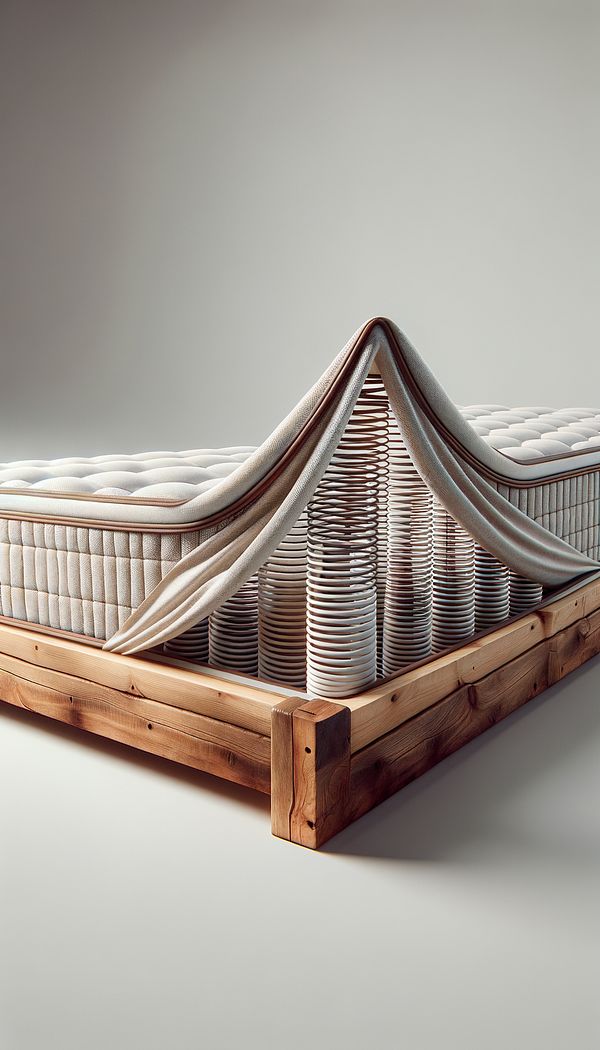What is a Box-Spring?
A box-spring is a supportive square or rectangular frame containing springs, used as a base for a mattress.
Description
A box-spring is fundamentally a type of bed base that contains springs enclosed within a wooden or metal frame, usually covered with fabric. It is designed to sit directly beneath a mattress, providing additional support and extending the mattress's life by absorbing shock from body weight and movement. The springs in a box-spring disperse the weight of the mattress (and its occupants), resulting in enhanced comfort and a prolonged lifespan for the mattress.
Box-springs can vary in height, with standard sizes typically around 9 inches deep, and low-profile versions about 5 inches deep, catering to various aesthetic preferences and requirements. While traditional box-springs consist of actual springs within the structure, modern variations might use metal rods or a sturdy wooden frame to provide similar support without the bounce.
The inclusion of a box-spring is particularly important for innerspring mattresses, as they work together to provide both support and comfort. However, not all mattress types require a box-spring. Memory foam and other specialized mattresses, for example, may perform better on a solid foundation without springs.
Usage
In a typical bedroom setup, a box-spring is placed on top of a bed frame, with the mattress resting on the box-spring. This arrangement can be found in various settings, from residential homes to hotels, offering a standardized support system that enhances sleep quality and mattress durability. Box-springs can also be part of a matching set, purchased together with a mattress, ensuring that the two are perfectly compatible in terms of size and support.
FAQs
-
Do all mattresses require a box-spring?
No, not all mattresses require a box-spring. Memory foam, latex, and some hybrid mattresses may be better suited to a solid foundation without springs. It's important to check the manufacturer's recommendations for your specific mattress.
-
Can a box-spring be used with any bed frame?
Most standard bed frames can accommodate a box-spring; however, some platform beds and adjustable bases are designed to support the mattress without needing a box-spring. Always verify compatibility before purchasing.
-
How often should a box-spring be replaced?
The life expectancy of a box-spring can vary, but generally, it's recommended to consider replacing it every 8-10 years or if you notice any sagging, noises, or reduced support.
Practical Application
When selecting a box-spring, consider the height of your bed frame and the total height you desire for your bed, incorporating the thickness of your mattress. This will help ensure your bed is at a comfortable height for getting in and out. Additionally, if you're pairing a box-spring with an innerspring mattress, confirm that the box-spring provides adequate support and is compatible with your mattress type to maximize comfort and durability.
-
Bamboo TurningBamboo Turning is a technique used to shape bamboo into various forms and structures for interior design and furniture making.
-
Sussex ChairA Sussex Chair is a type of wooden armchair traditionally made from elm or beech.
-
Block FrontBlock front refers to a furniture front design that protrudes in the middle section, creating a convex appearance.
-
PalmettePalmette is a decorative motif resembling the fan-shaped leaves of a palm.
-
HierarchyHierarchy in interior design refers to the deliberate organization of elements in a space to signify their importance.
